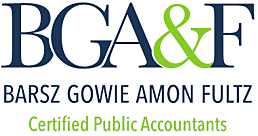Child-care costs continue to rise faster than overall inflation, squeezing working parents and, by extension, the employers that depend on them. Section 45F of the Internal Revenue Code offers a direct way to help: a federal credit that reimburses part of the expense when a business builds, subsidizes, or arranges childcare for its workforce. Used correctly, the credit can cut up to $150,000 from a company’s tax liability each year while strengthening recruitment, retention, and productivity.
How the credit works
The mechanics are relatively straightforward. The annual credit equals 25% of qualified facility expenditures plus 10% of qualified resource and referral costs, subject to the $150,000 cap. Businesses of any size can generally qualify for the credit, as long as their expenses meet eligibility requirements:
Qualified facility expenditures
Qualified facility costs cover the acquisition, construction, expansion, or day-to-day operation of a licensed center that primarily serves employees’ children. To qualify, the facility must satisfy all state and local licensing rules, be open to all employees, and avoid favoring highly compensated employees.
If the daycare center is also the owner’s core business, at least 30% of enrollees must be dependents of employees. Written contracts, detailed invoices, and up-to-date licences are a must because the IRS can disallow the credit if documentation is incomplete.
Also worth noting: if the facility stops operating or is sold within 10 years, the credit can be subject to recapture.
Resource & referral services
Resource and referral services are another way to help parents find reliable care, and they can qualify for the credit if certain conditions are met. To qualify for this component of the credit, your organization must pay expenses under a written contract for childcare referral services.
This doesn’t mean you can just create an internal spreadsheet of local centers – it’s designed to reimburse a share of expenses when you help employees secure professional childcare.
In practice, employers typically sign an annual or multi-year agreement with one of three types of vendors:
- A regional childcare resource agency that maintains a database of licensed providers, staffs a helpline, and offers individualized placement counseling.
- A single licensed center or consortium of centers that agrees to reserve slots, keep waiting list data current, and match families with openings.
- A national platform such as Care.com or Bright Horizons’ network, purchased on a per-employee-subscription or per-use basis.
The vendor generally invoices your company for setup fees, monthly access, or service charges. Those payments typically count as qualified resource and referral expenses.
Combining facility and referral credits
Both qualified facility expenses and referral expenses can coexist. An employer with an on-site center may still have remote staff, shift workers, or employees who can’t use the on-site facility. A referral service contract can potentially cover those employees, and the resulting costs produce another credit (subject to the $150,000 ceiling).
Claiming the credit
To claim the Employer-Provided Childcare Tax Credit, calculate the amount on Form 8882, “Credit for Employer-Provided Childcare Facilities and Services.” Then, transfer the figure to Form 3800, “General Business Credit.” Pass-through entities must still file Form 8882 at the entity level, and the credit flows to owners on Schedule K-1. Owners then claim the credit on their own Form 3800.
The credit is non-refundable and limited by general business credit rules. However, if you cannot claim the full credit in the current year, you may carry the unused portion back to the previous year or carry it forward for up to 20 years.
One important tip: keep excellent records. Hold onto invoices, contracts, and licensing paperwork to back up your claim. Because part of your facility’s costs is offset by this credit, you will also need to adjust your basis and certain deductions to avoid any double benefit.
Common challenges and mistakes
The most frequent issues are misclassifying expenses (e.g., treating toys or snacks as credit-eligible capital costs), failing to maintain contemporaneous records, and structuring programs that inadvertently benefit only executives. A pre-implementation compliance review can prevent expensive amendments later.
It is also important to look at how the Employer-Provided Childcare Tax Credit fits into your larger tax planning. If you are using other deductions or incentives related to childcare, you want to avoid double-dipping. Taking the time to understand all the options and how they overlap can help your business maximize what is available.
Moving forward
If you’re considering on-site care or referral partnerships with childcare providers, we can help quantify the costs and benefits and ensure you understand the relevant rules. Contact our office for personalized guidance.




